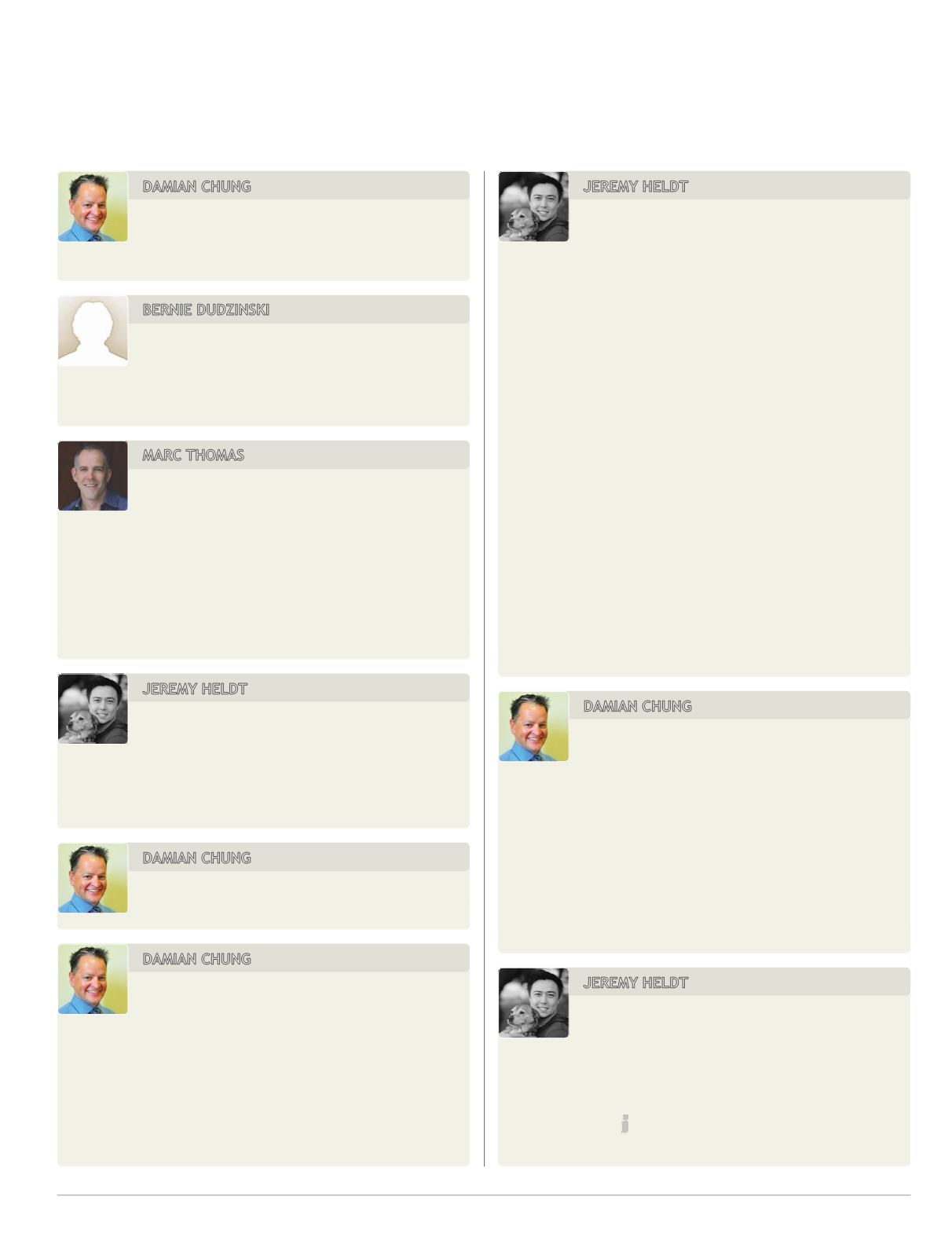
75
DAMIAN CHUNG
Emil: Anything beyond a 10 mm implant is prob-
ably just filling space. 18 mm just puts the patient
at risk of a very deep implantitis.
BERNIE DUDZINSKI
Marko, that helps a ton. I was trying to use the cut
tool first and was getting a ton of errors. I like the
idea of just sticking with the replace tool and then using the
reduction one where you need it. Thanks!
MARC THOMAS
Marko: Very nice. I have never been able to get the
replace tool to predictably work when there is a
large change in the Z axis involved, I usually get the “fail to
interpolate” error message. I never thought of deliberately
not moving the model when outlining the area, I have always
tried to be more precise when virtually extracting a tooth.
Thanks for the demo, this will be very nice for guides, and
maybe for virtual wax-up and printing.
JEREMY HELDT
I can understand your reasoning if it were a healed
edentulous space, but how would you try to get
primary stability in an extract and immediate case where the
tooth is 15 mm in length? I’m pretty new to implants so defi-
nitely would appreciate feedback on this approach.
DAMIAN CHUNG
Sorry, I took it out of context and was referring to
healed sites.
DAMIAN CHUNG
Taking a look at your case Jeremy, it depends on the
aesthetics you are after of course, but if you wanted
the implant premolar to look the same length as the natural one,
you may have needed to place the platform level of the implant
higher. Hard to be sure from the images, but the implant plat-
form appears to be set at the level of the natural premolar CEJ.
This means the implant crown will be about 3 mm shorter than
the natural one. Again, if that is what suits the case, that’s fine.
JEREMY HELDT
Ah, I see what you mean now. The premolar
crown looks clinically short for a couple reasons.
The first is because a releasing flap was performed during
the surgery to coronally move the gingiva to hug around the
provisional crown. I’m hoping to get a more esthetic gingival
architecture as it heals, tension-free sutures, and also getmore
primary closure of the flap to be hygienic for the patient (less
debris can access the implant platform). The gingiva here
looks swollen and a lot larger. After a couple weeks, I think
the gingiva will tighten up and the CEJ will start to form and
stabilize about 3 mm from the crest of the bone.
I tried to place the implant at bone level (replacing the
tooth that was previously there at the same level).
The second reason the crown looks small is because it was
shaved down to take out of occlusion since it’s a provisional
crown. The final crown should look much different than it
does here after six months. I’ll take some photos for the PO
check.
I’m currently taking the gIDE Master Clinician Program
in Venice, Italy. I was going to ask Sascha Jovanovic what he
thinks about the case. Will post an update.
DAMIAN CHUNG
I was more focusing on the cone beam of the post-
op. It’s hard to tell just from the shot you posted,
but radiographically it looks like the platform is about level
with the premolar CEJ.
If you drewa horizontal line from the premolar to themolar
CEJ on the most buccal aspect (not interproximal CEJ as this
will always be more apical), you’d want the implant platform
to be 3 mm apical to this. Does that make sense? It might be
that you have done this already, it’s hard to be sure from the
screenshots.
JEREMY HELDT
Yeah, it does look that way, hard to say.
From what I remember of the surgery, I did my
best to approximate the platform at crestal bone level. I’m
sure it would’ve been better to go a little deeper with a shorter
implant just to be safe though. Thanks for taking a look and
letting me know.


